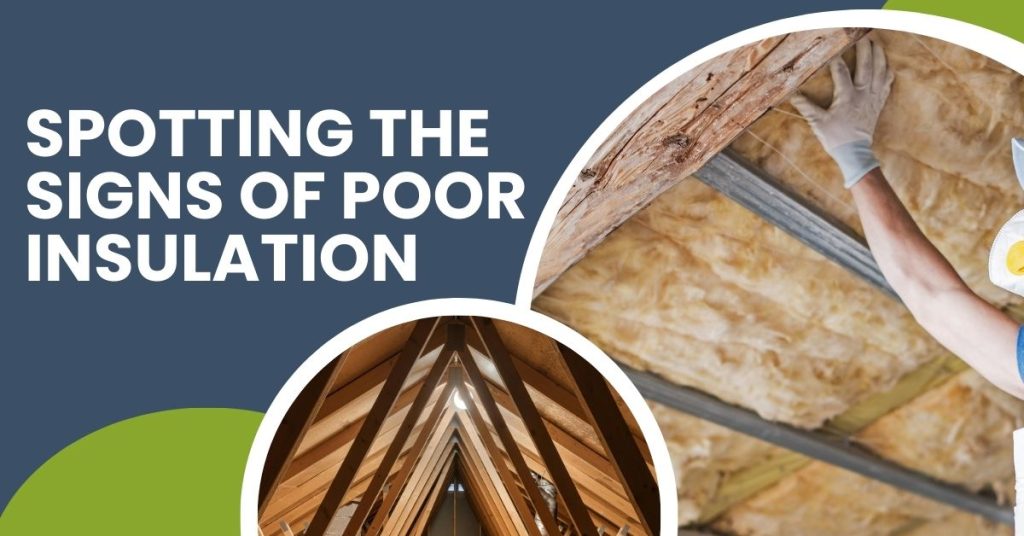
As the evenings draw in and the Irish weather turns colder, homeowners across the country are preparing for another winter of rising energy bills. One of the most common reasons for high heating costs is poor home insulation. Unfortunately, many properties in Ireland still lose significant amounts of heat through walls, roofs and poorly sealed windows.
A home survey is one of the best ways to spot insulation issues before they start to cost you money. Here’s what to look out for, and how a surveyor can help.
Why insulation matters
Insulation does more than just keep a house warm. Proper insulation:
- Reduces heating bills by preventing unnecessary heat loss.
- Improves comfort by maintaining even room temperatures.
- Helps to prevent condensation and dampness.
- Increases the energy efficiency rating of a home, a selling point for buyers.
In contrast, poor insulation not only wastes energy but can also create conditions for mould, draughts and unhealthy living spaces.
Common signs of poor home insulation
If you’re unsure whether your property is properly insulated, here are some warning signs surveyors often highlight:
- Cold spots and uneven temperatures
Rooms that feel chilly even with the heating on, or walls and ceilings that are noticeably cold to the touch, are strong indicators of missing or inadequate insulation. - Draughts around windows and doors
Gaps in seals or poorly fitted frames allow cold air in and warm air out. Surveyors often use thermal imaging or simple draught tests to locate the problem areas. - Condensation and damp
Warm air meeting cold surfaces can cause condensation. Over time, this may lead to mould growth, particularly around windows, ceilings or external walls. - High energy bills
A property that requires constant heating to stay warm is usually losing heat somewhere. Comparing your bills with similar properties can highlight whether insulation might be to blame. - Overheating in summer
Insulation isn’t just for winter. Homes with poor insulation often overheat in warmer months because they lack the barrier that regulates indoor temperatures year-round.
Where surveyors look for insulation issues
During a home heat loss survey, an experienced surveyor will check several key areas of a property:
- Attic and roof: One of the biggest sources of heat loss. Missing or poorly fitted insulation is common in older homes.
- Walls: Many Irish houses still lack proper cavity wall insulation. Solid walls are especially vulnerable to cold bridging.
- Windows and doors: Single glazing or poorly sealed units are a red flag. Even newer double glazing can be compromised if not correctly installed.
- Floors: Especially in older properties, uninsulated floors above crawl spaces or basements can let cold air rise through.
By systematically checking these areas, surveyors can identify where improvements are most urgently needed.
The hidden costs of ignoring insulation
Failing to address insulation problems can have long-term consequences:
- Significantly higher heating bills each winter.
- Risk of damp, mould and associated health problems.
- Reduced property value due to poor Building Energy Rating (BER).
- Expensive repairs if condensation damages timber, plaster or paintwork.
In other words, the cost of skipping an insulation check is often far higher than the cost of upgrading insulation itself.
How iSurv can help
At iSurv, our team of experienced property surveyors in Ireland regularly uncover poor insulation during pre-purchase surveys and home condition reports. We highlight problem areas, explain the impact they may have on energy efficiency, and recommend practical next steps.
Whether you’re buying a home or want to make your current property warmer and more cost-efficient, a professional survey will give you the clarity you need before winter arrives.
With energy prices unlikely to fall any time soon, improving insulation is one of the most effective investments Irish homeowners can make. If you’ve noticed draughts, cold spots or condensation, don’t wait until the heating bills arrive. A survey from iSurv can reveal exactly where your home is losing heat, and help you put it right.
